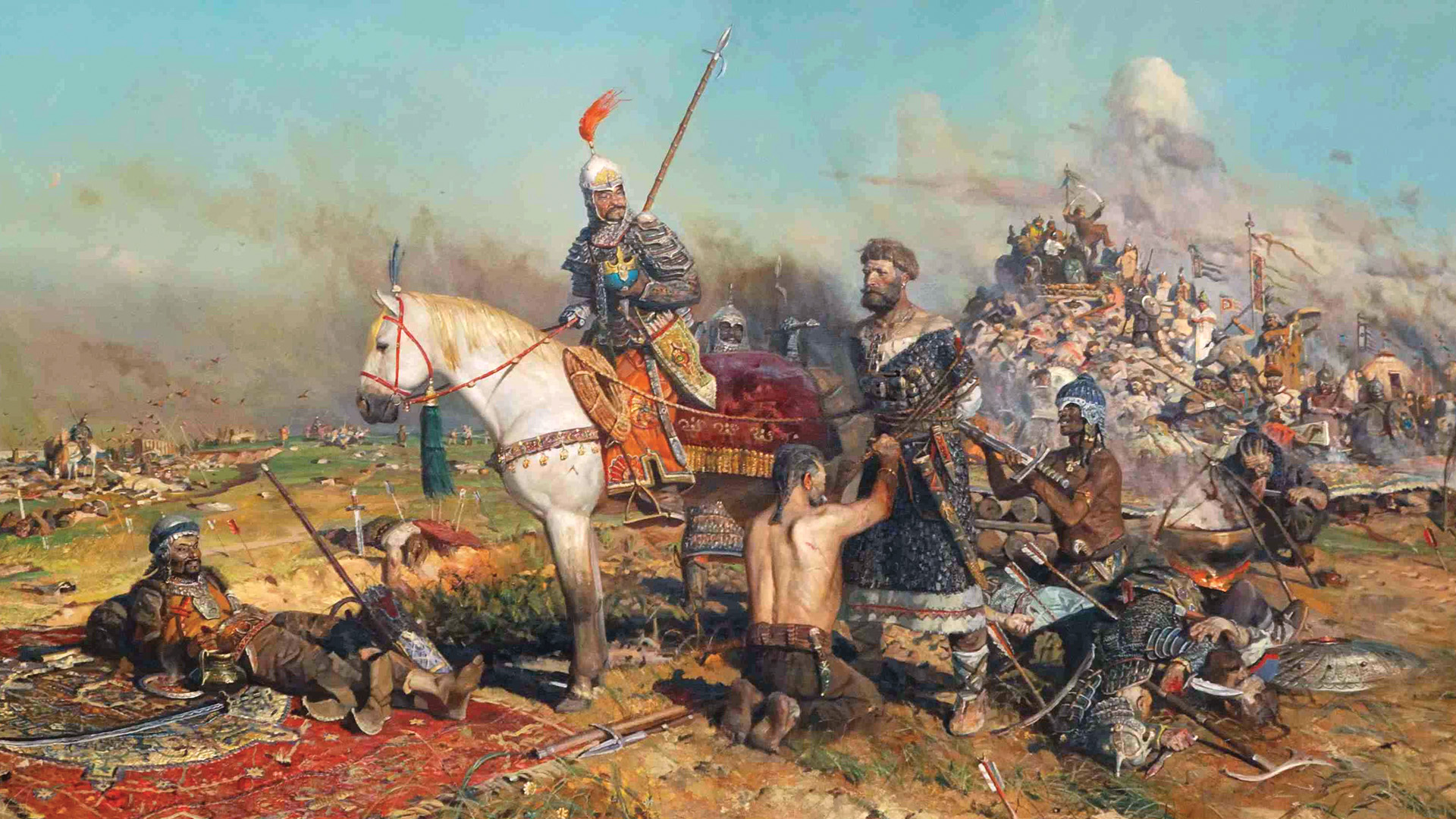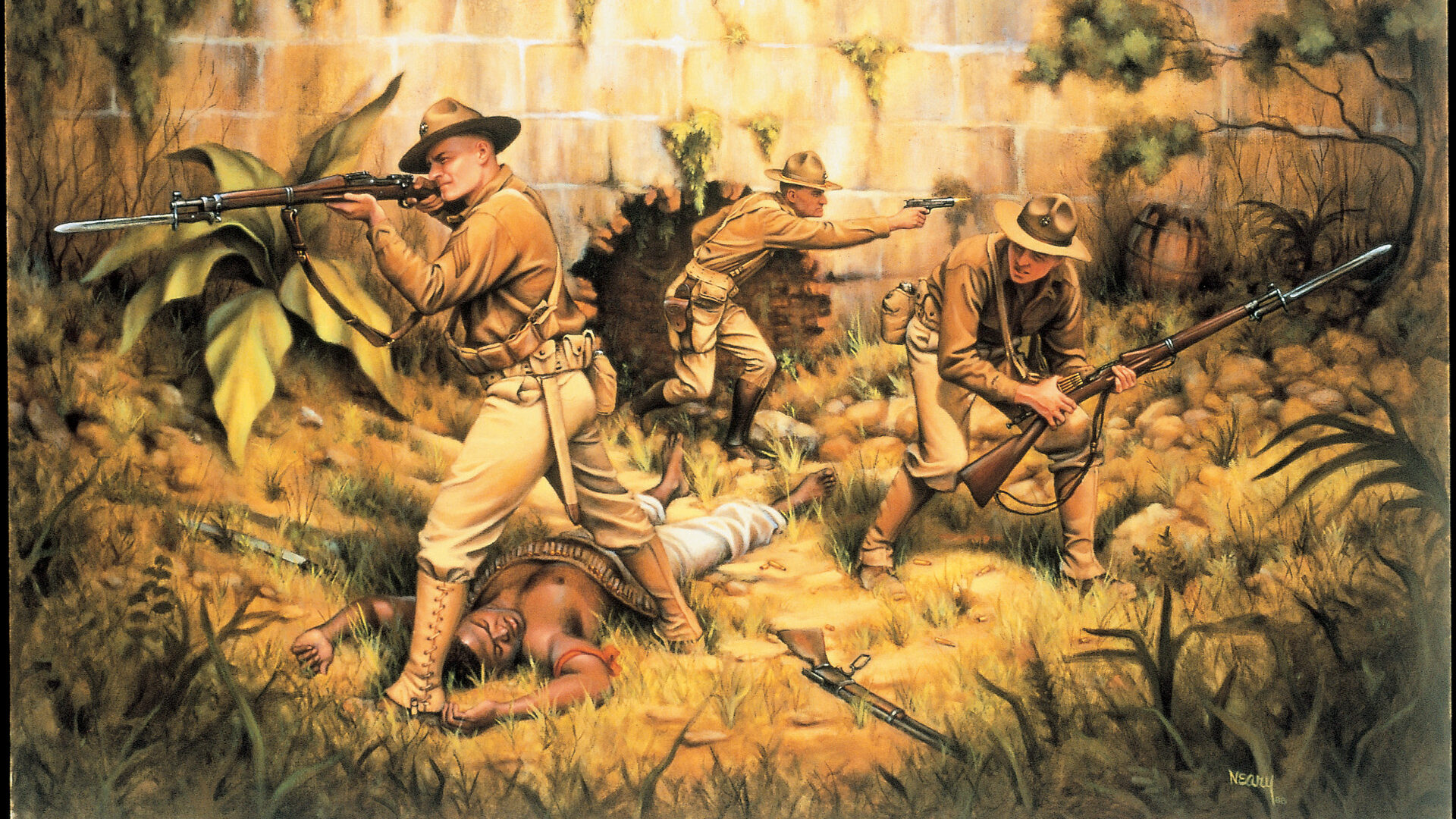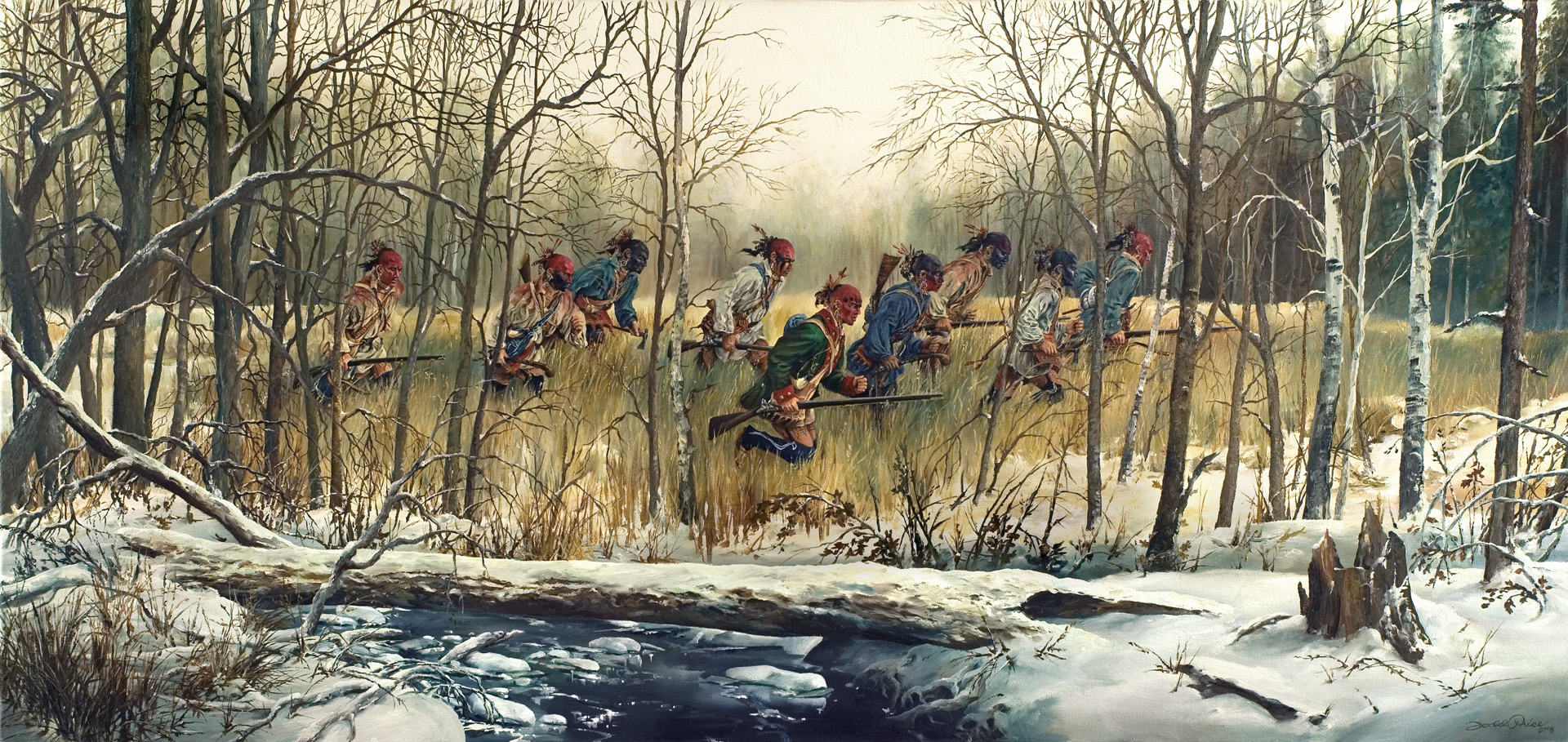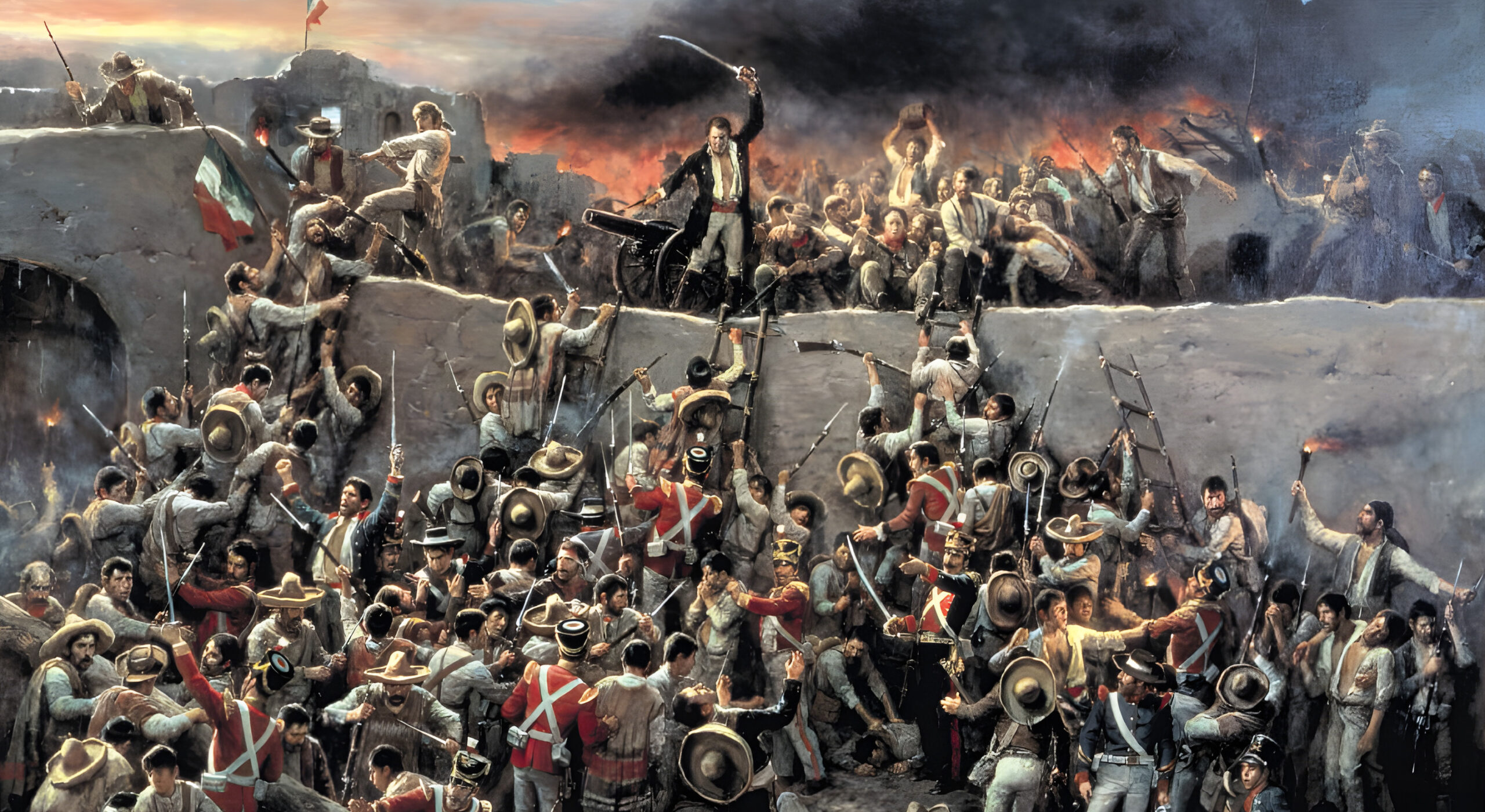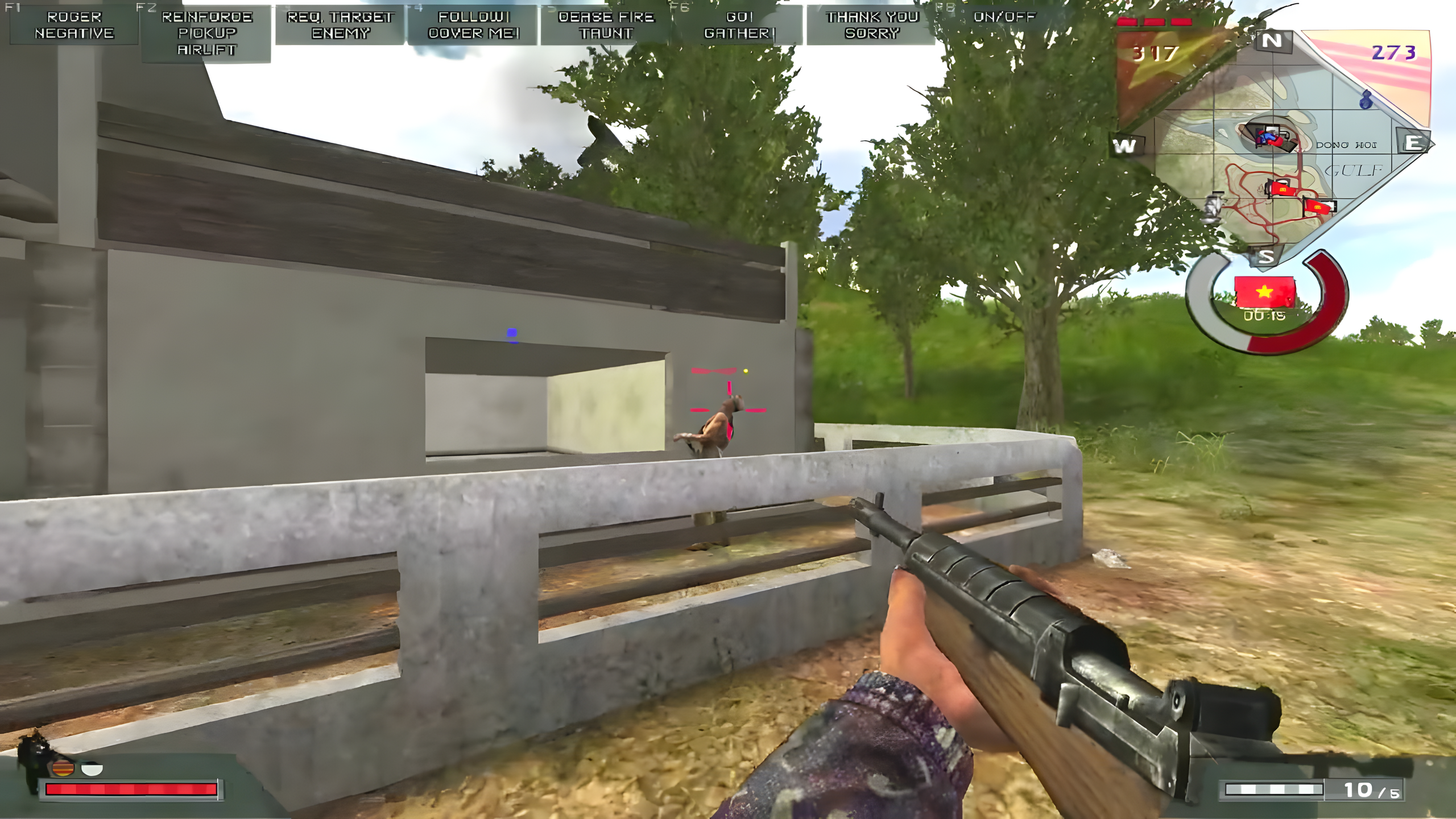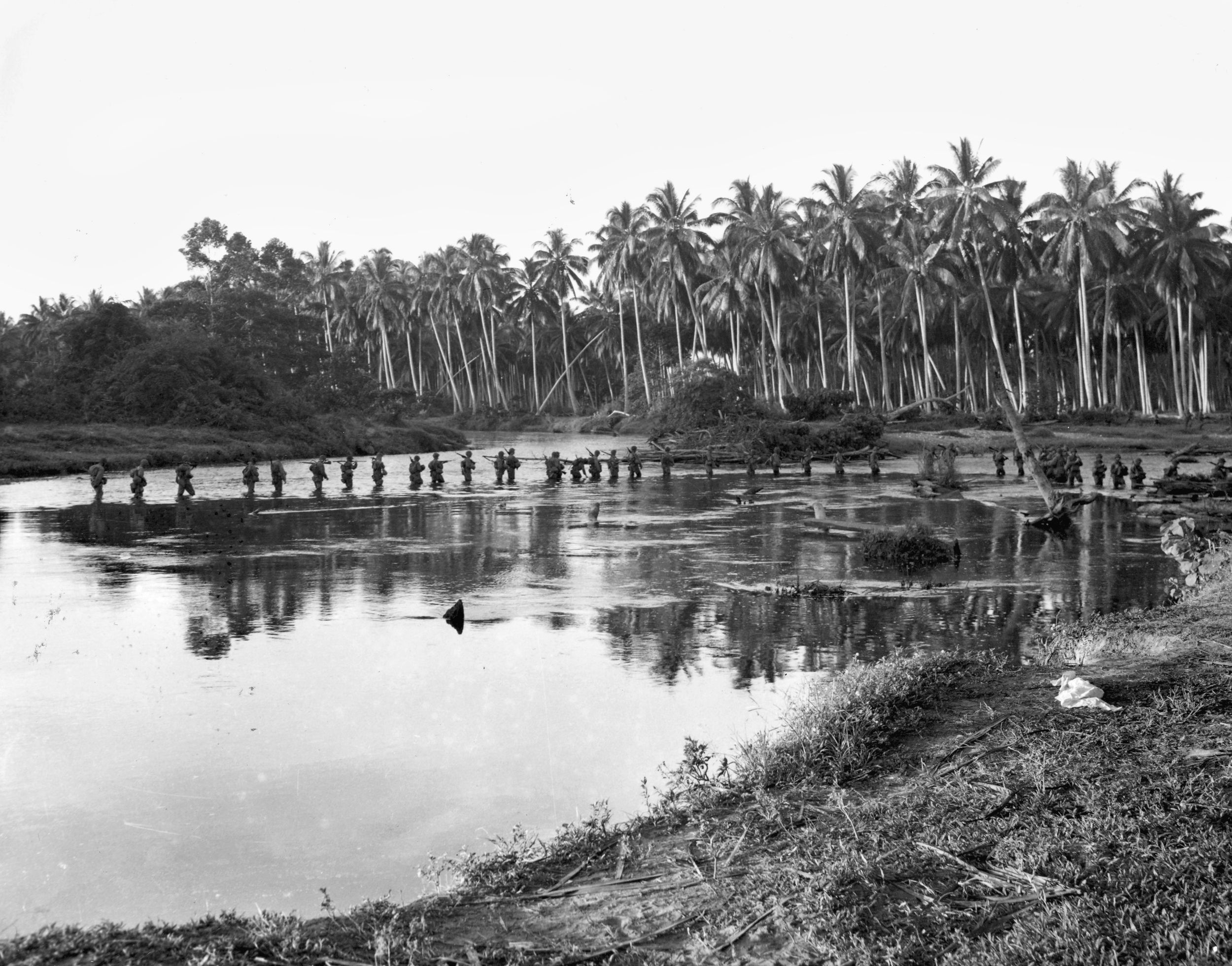By Victor Kamenir
A tumultuous discussion raged in the hall of Mstislav III “The Old” Romanovich, the Grand Prince of Kiev, in March 1223. An embassy of Turkic-speaking Polovtsian nomads humbly stood before the throne of the Russian prince. The embassy had arrived earlier in the day bearing rich gifts that included a bounty of gold and silver, exotic fabrics from the East, and slave girls.
They also bore news of disturbing developments on the steppe lands to the south. They reported that a large Mongol army had passed through the Caucasus Mountains several years earlier. During their march through the mountains, the Mongols had defeated the Georgians. They emerged into the Russian steppe where they had been encamped with no sign of leaving any time soon. During that time, the Mongols had also routed several Polovtsian tribes.
The Mongol victory over the Georgians and several Polovtsian tribes had been so thorough that it unnerved Khan Kotyan, one of the senior Polovtsian khans in the delegation. He appealed directly to Mstislav Romanovich for military assistance against the Mongols. While the grand prince was considering the request, shouting erupted among the nobles of his court and his generals.
The uproar was a negative reaction to the request given that the Polovtsians were traditional enemies of the Russians. Their frequent raids had caused extensive destruction throughout southern Russia. Many of Mstislav Romanovich’s nobles had lost kin fighting the Polovtsians. Neither the grand prince nor his advisors were familiar with the Mongols and, therefore, it was difficult for them to judge the severity of the threat. Although some of those present were all too glad to hear about the misfortunes that had befallen the Polovtsians, Mstislav Romanovich knew it was important to examine the situation from all angles before making a decision.
The sexagenarian grand prince was a veteran of the dynastic intrigues and internecine wars that embroiled Kievan Rus. Once the dominant power in medieval Russia, by the beginning of the 13th century Kievan Rus had disintegrated into a number of squabbling principalities. Upon the death of a ruler succession often went not to his sons as it traditionally had, but to his brothers. This resulted in clannish struggles that pitted brothers against uncles. Princes ruling small principalities constantly maneuvered to take control of bigger, richer, and more prestigious ones.
After some consolidation, a dozen principalities emerged. The two most prestigious and powerful of them, centered on the cities of Kiev and Vladimir, were titled grand principalities and their rulers were called grand princes. Other substantial principalities were Novgorod in the north, Galicia-Volhynia in the south, and Smolensk and Chernigov in the center.
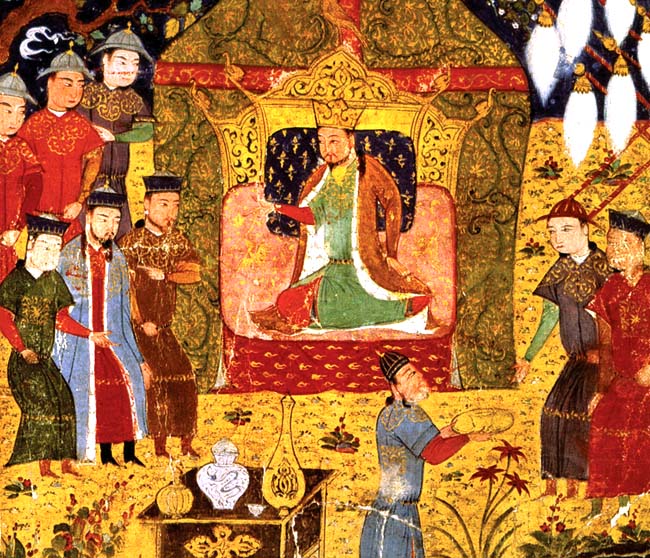
Bordering Russian territory in the south was an extensive steppe land north of the Black Sea known as the Wild Field, which stretched from the Dniester River in the west to the Don River in the east. The most powerful of the numerous nomadic tribes in the region were the Polovtsians. They occupied the lands from north of the Black Sea to the Aral Sea. There was certainly a precedent of making alliances with the Polovtsians, for Russian princes often enlisted their assistance against their rivals. Indeed, Russian princes frequently married pretty Polovtsian princesses, who upon marriage converted to Christianity. The intermarriage flowed only one way, though, for no Russian prince would allow his daughter to marry a shamanistic nomad.
One such matrimonial union for political purposes was that of a daughter of Khan Kotyan to Prince Mstislav “The Lucky” Mstislavovich, a ruler of the Principality of Galicia-Volhynia in modern-day Ukraine. The principality was the result of a union between the neighboring provinces of Galich and Volyn. Prince Mstislav of Galicia was an experienced, well-respected, and widely feared war leader who had proven himself in the Kipchak Wars. His protégé was young Prince Daniel Romanovich of Volyn, a famous warrior in his own right. Although the Grand Principality of Kiev was nominally senior to Galicia-Volhynia, Mstislav did not hold himself junior to his namesake, who was jealous and cautious of the other man’s reputation.
Even though Khan Kotyan was related to Mstislav of Galicia by marriage and could count on at least some military assistance from his son-in-law, it was a shrewd move to turn to Mstislav Romanovich of Kiev first. Not only were the lands of Kiev closer to a possible Mongol invasion, but such a display of deference was sure to play to Mstislav Romanovich’s vanity and desire to enhance his reputation as a great warrior.
Although Mstislav Romanovich decided to assist the Polovtsians, he met fierce resistance from his nobles. Many of the nobles vehemently opposed aiding the Polovtsians. Some went so far as to make veiled hints that Mstislav Romanovich was bought by the bounty of gifts the Polovtsian khans had brought him. But Mstislav Romanovich believed it was essential to assist the Polovtsians; otherwise, they might strike a deal with the Mongols and turn against Russia.
Sensitive to both sides, Mstislav Romanovich crafted a compromise. He not only intended to assist the Polovtsians, but also summoned the Russian princes to attend a subsequent military council for the purpose of planning how to defend the Russian principalities against the Mongols. He promptly dispatched messengers to both grand and minor princes of roughly a dozen principalities requesting that they attend the council.
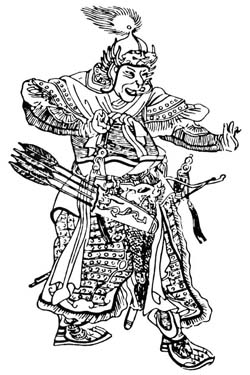
To Mstislav’s chagrin, many princes did not respond to his summons. Some replied that that they had more pressing affairs, while others did not response at all. Nevertheless, 20 princes of various ranks gathered in Kiev. The most important of them was Mstislav of Galicia, who was accompanied by Prince Daniel Romanovich.
Several other princes attended the council. Prince Mstislav “The Mute” Yaroslavovich arrived from Lutsk. In his younger days, Mstislav of Lutsk had been wounded in the face by a spear, which left his jaw and tongue badly mangled and resulted in his nickname. He could only speak in a whisper as a result of his wounds and therefore was accompanied by an attendant who would listen to what the prince whispered and repeat it in a clear voice. In addition, Mstislav Svyatoslavovich of Chernigov attended with his sons Vsevolod and Dmitriy. Also arriving to participate in the council was Vladimir Rurikovich, the Prince of Ovruch, who had been designated to represent the Principality of Smolensk.
A heated discussion occurred as to whether the Russians should furnish assistance to the Polovtsians. Many princes were categorically opposed to aiding the Polovtsians. They held that the looming clash between the Polovtsians and Mongols was simply a rebalancing of power in the steppe. As proof of their theory, they pointed to how the Polovtsians had ejected the Pecheng tribes in the late 11th century. In contrast, another faction, which was headed by Mstislav of Galicia, was spoiling for a fight. It had the support of many of the younger princes.
Mstislav Romanovich’s sons Rostislav and Vsevolod pulled their father aside to protest in private against the campaign. They said that they had their own problems with rivals in Polotsk and Grodno. Although this caused Mstislav Romanovich great frustration, he nevertheless gave his sons leave to attend to their personal affairs.
These arguments lasted three days before Mstislav Romanovich prevailed and the majority of the princes reluctantly agreed to participate in his campaign against the Mongols. Then, a new point of contention emerged. Mstislav of Galicia and Mstislav Romanovich quarreled over who should command the joint Russian forces. As the most senior prince, Mstislav Romanovich demanded to be placed in command, while many other princes wanted to see the more experienced Mstislav of Galicia in charge. Arguments threatened to collapse the fragile alliance before it even began. Vladimir Rurikovich, cousin of both princes, whose son Andrey was married to Mstislav Romanovich’s daughter, brokered a compromise. Mstislav Romanovich would command the forces of Kiev, Chernigov, and Smolensk, and Mstislav of Galicia would lead the forces of Galicia-Volhynia and Lutsk.
The Russians began preparing for war against the Mongols in mid-March 1223, and the Russian forces began gathering at the designated rendezvous point in early April. The campaign was scheduled to officially begin immediately following Orthodox Easter, which fell on April 23.
The rendezvous point was the great bend in the Dnieper River where the old trade route, Zalozni Way, began on its way southeast to the Sea of Azov. The infantry from Kiev, Chernigov, and Smolensk sailed down the Dnieper in longships while the cavalry rode along the west bank. The forces of Galicia-Volhynia, including men from Lutsk, Pinsk, and Turiv, journeyed by boat down the Dniester River to the Black Sea then along its north shore to the mouth of the Dnieper River, and then up the river to the staging areas. Polovtsian war bands steadily trickled in to join the Russians.
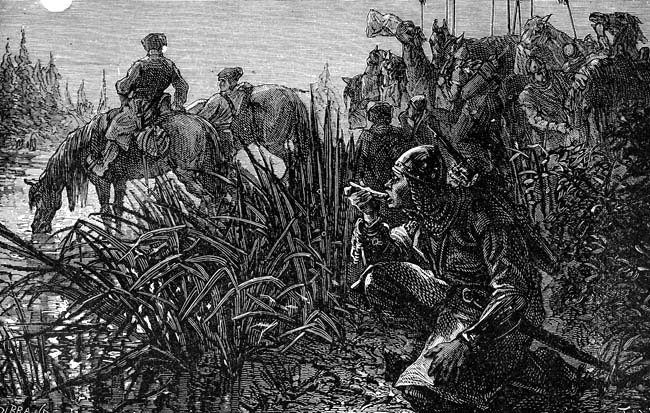
While the Russian forces were gathering, an embassy of six Mongol envoys accompanied by two Muslim interpreters arrived at Mstislav Romanovich’s camp. The Russian leaders where not impressed by what they saw. Specifically, the Mongols were short of stature and their stocky torsos were supported by bow legs. As for their haughtiness, the Russians were greatly offended by it.
Mongol ambassadors requested that the Russian princes remain neutral in what the Mongols saw as their personal conflict with the Polovtsians; instead, the Mongols offered an alliance with the Russians. The Russians discerned that the envoys were insincere and dishonest. Moreover, they believed they were spies. Despite protests by some of the princes, Mstislav Romanovich ordered the six Mongols executed. The Russians allowed the Muslim interpreters to leave unharmed.
In mid-May the forces of Galicia-Volhynia arrived. They were followed by the main body of Polovtsians under Khan Kotyan. Another Mongol embassy arrived with the same interpreters. They made another request for Russian neutrality and again proposed an alliance. Both propositions were rejected, but this time the envoys were allowed to leave with their lives.
The mood in the Russian camp was light, for the princes were confident of victory and viewed the upcoming campaign as a minor distraction before returning to the serious business of jockeying for power. The Russian army is reported to have numbered 80,000, although its actual size was probably smaller. The cavalry is estimated to have consisted of 12,000 Russian horsemen and 8,000 Polovtsian horsemen. The rest of the Russian army was on foot.
The elite heavy cavalry that belonged to the princes fought with lances and used swords and battle axes as secondary weapons. As for the infantry, it fought with a variety of weapons, including spears, swords, war axes, maces, and bows. The Russians wore a wide variety of armor, including scale, lamellar, and mail. They carried large teardrop-shaped shields and wore conical helmets.
The Russian lack of intelligence about the Mongols was glaring. The Mongol Empire had come into being in 1206 at a great assembly of all the Mongol tribes held in Outer Mongolia. The new nomad empire was unlike previous ones in that it had a fixed center. From their base in the Mongolian steppe, the Mongols could send armies to the east or west as they saw fit.
Mongol Chieftan Temujin of the Borjigin clan was the founder of this powerful new empire. Over the course of 20 years of continuous warfare, he had succeeded in bringing all of the tribes of the grasslands north of the Gobi Desert under his personal rule. At the great assembly in 1206 he informed the clans under his rule that they would soon embark together on a conquest of other lands and peoples beyond the Mongolian steppe. In confidence of a successful campaign of conquest, he assumed the title of Genghis Khan, meaning Lord of the Earth.
As Genghis Khan had anticipated, his army of conquest was unstoppable. He subjugated the neighboring Quara Khitai Empire in 1220 and immediately afterward conquered the sprawling Khwarizm Empire, which stretched from the borders of India to those of Anatolia. Warriors of many of the defeated empires were assimilated into the Mongolian army and became bound together through common language, lifestyle, and religion.
An able and astute administrator, Genghis Khan reorganized the war bands of the Mongol tribes into a military organization based on the decimal system. A squad of 10 warriors was called a harban, a company of 100 men was known as a dzhaun, and a 1,000-strong regiment was called a mingan.
As the Mongol army grew in size, a larger division-sized unit called a toumen was formed from 10,000 warriors. The officers, known as noyans, were typically members of tribal aristocracy, but promotion by merit was widespread and members of humble backgrounds frequently rose to upper ranks. The most senior ranks, which commanded a corps composed of two or more toumens, were reserved for members of Genghis Khan’s immediate family and his most trusted commanders.
The bulk of Genghis Khan’s army was composed of horse archers. These horsemen had been trained from early childhood to hunt and fight and were inured to the suffering and harsh conditions of the Mongolian steppe. The striking power of the Mongols was based on their extraordinary mobility, with each soldier leading a string of four to six horses and capable of remaining in the saddle for days. Genghis Khan and his generals readily adopted the advanced military technology and skills possessed by the people they conquered. For example, they assimilated artillery and engineering skills from the Persians and Chinese. Each large Mongol unit included a staff of astute Chinese administrators who collected and collated reports by scouts and spies and questioned travelers and merchants about the lands of interest to the Mongols.
Numerous foreign travelers noted the high quality of Mongol weapons, armor, and equipment. Each Mongol warrior was equipped with “a sword, a club, a bow, sixty arrows: thirty small arrows with a short, iron point used for piercing remote targets and thirty larger ones with broad arrowheads which were tossed at people who were very near in order to injure their faces, shoulders, cut the bow strings and cause damage,” wrote Italian explorer Marco Polo. In addition to the lightly armored horse archers, the Mongol army included a significant number of heavy cavalry who wore lamellar armor and whose horses were often armored as well.
After overseeing the conquest of the Khwarezmian Empire, Genghis Khan made plans to return to Mongolia. Before his departure, he granted permission to his top general, Subutai, to conduct a reconnaissance-in-force. Subutai already was contemplating future campaigns of conquest and the reconnaissance would aid in planning them. Genghis Khan ordered another to general, Jebe, to accompany Subutai. For their reconnaissance, the two commanders had 20,000 troops.
Subutai and Jebe defeated a Georgian army three times the size of theirs in 1220 and then marched into the steppe lands occupied by the Polovtsians. They planned to camp for a prolonged period in the steppe to regain their strength. During that time they would dispatch envoys to negotiate with the Russians. The envoys not only negotiated, but also assessed an enemy’s strength through observations reported to the senior commanders.
The day after the second Mongol embassy departed, Polovtsian scouts on the east bank of the Dnieper River reported contact with leading elements of the Mongol army. Eager to cross swords with the mysterious enemy, the Russians built a bridge by lashing boats together and nailing planks on top of them to facilitate the crossing of their cavalry. The first across were 500 horsemen under Daniel Romanovich. Afterward, more Russians and Polovtsians streamed over the bridge of boats. The Mongols fell back along the Zalozni Way, shooting arrows over their shoulders from their composite bows. The Russians and Polovtsians marveled at the accuracy and range of the Mongol horse archers.
A small unit of Mongols was trapped by the Polovtsians and Russians. More Mongols and Russians joined in and soon thousands of riders whirred in a sharp melee. The Mongols began falling back, scattering before larger numbers, quickly reforming just out of reach and closing in again, always firing their bows. As more and more Russian and Polovtsians cavalry crossed the river and joined the fray, the Mongols melted away. Young Russian princes who had their blood up wanted to pursue the Mongols, but Mstislav of Galicia restrained them.
Encouraged by their first success against the Mongols, Russian forces continued crossing the river; in the process, they brought commercial traffic on the river to an abrupt halt. After the crossing was completed, the plank bridge was dissembled and the long ships beached on the east bank of the river under guard of 300 foot soldiers.
The Russian princes bickered once again at an evening council about the issue of command. Neither Mstislav of Galicia nor Mstislav Romanovich was willing to acknowledge the other’s leadership. Another compromise was reached. This time Mstislav of Galicia was placed in charge of the vanguard, which consisted of the troops of the principalities of Galicia-Volhynia and Lutsk. Mstislav Romanovich commanded the main body of the Russian army. There was tension within the main body of the army as well for both Mstislav of Chernigov and Prince Vladimir Rurikovich of Smolensk desired to march at the head of the main body rather than their respective contingents.
The Russian army followed the Mongols for seven days along the Zalozni Way, passing over a seemingly unending terrain of rolling hills and small rivers. The Mongols were always in sight, but just out of reach. Frequent skirmishes occurred between the Polovtsians and Mongol scouts. Marching columns and wagon trains of the Russian army stretched over 15 miles. Thick screens of Polovtsian cavalry protected the flanks of the column.
The squabbling among the Russian princes continued unabated. Mstislav of Galicia was pressing for faster advance, demanding to be reinforced by mounted contingents from Chernigov and Smolensk in order to locate and pin down the main Mongol army before the Russians went too far into vast steppe. In contrast, Mstislav Romanovich demanded that the army slow down so that infantry could keep up. The foot-sore Russian infantry had grown weary under the hot sun and grew more fatigued with each passing day.
On May 30, the eighth day of the pursuit, the Russian forces reached the fords in the Kalka River, a narrow tributary flowing south through the hilly terrain to the Sea of Azov. Although the exact location remains unknown, it is believed to be 20 miles north of the modern-day city of Mariupol on the north shore of the Sea of Azov.
The forces of Galicia-Volhynia, Lutsk, and Smolensk splashed across and set up their camps on the east side of the river, while those of Chernigov established their camp in the immediate vicinity of the ford on the west side. As for Mstislav Romanovich, he moved his Kievan contingent to a steep hill a half-mile from the river. It was a strong position that was protected by deep ravines on the south and east side of the prominence.
At that point, the two senior commanders argued over strategy. Mstislav Romanovich wanted to slow the army’s speed of advance. He therefore proposed a new marching order. The Chernigov forces would lead the way. The main body following them would be arrayed as follows: the Smolenskian troops on the right, Lutskian troops on the left, and Kievan troops in the middle. In a deliberate move to restrain Mstislav of Galicia, Mstislav Romanovich ordered that his rival’s forces constitute the rear guard. Mstislav of Galicia left the council in a huff without consenting to the new marching order.
Before dawn on May 31 the Polovtsian scouts returned to Mstislav of Galicia with news that they had spotted the main Mongol camp. Knowing that if he alerted the other princes to this development—especially Mstislav Romanovich—the large part of the morning would be spent arguing about the course of action, Mstislav of Galicia made the crucial decision to prepare his troops for action without the usual trumpet signals.
Despite the precautions taken by Mstislav of Galicia, his preparations were noticed by sentries in the Smolensk camp, who promptly alerted their prince. Quickly discovering what was underway and not wishing to be left out of the upcoming action and glory, Vladimir of Smolensk ordered his trumpeters to rouse his troops. The commotion in the Smolensk camp in turn alerted the men of Chernigov bivouacked on the west bank of the river. Prince Mstislav of Chernigov rushed to inform Mstislav Romanovich.
The Grand Prince of Kiev angrily observed the preparations from his hilltop position as his rival’s forces formed up and marched over the hill on the other side of the river. The men of Smolensk soon disappeared from view as well, and grumbling began in the Chernigov camp. Most of the Chernigov commanders wanted to march for they were anxious to participate in the action; however, Prince Mstislav of Chernigov would not march without Mstislav of Galicia’s permission, and he would not give it.
The first to make contact with the enemy were the Polovtsians, who were spread out ahead of the coalition force in a thick screen under the joint command of Khan Kotyan and Yarun, one of Mstislav of Galicia’s officers. They brushed aside the Mongol pickets before running into a small Mongol vanguard, which retreated after a brief clash. Close on the heels of the retreating Mongols, the Polovtsians came upon a small Mongol camp, which they took for the leading element of the main Mongol army. Quickly overrunning the camp and pushing on in a headlong pursuit, the Polovtsians encountered the main body of Mongols, which had been cleverly concealed behind a chain of rolling hills. The Mongols’ initial volley of arrows emptied hundreds of Polovtsian saddles. The Mongol heavy cavalry then overran the Polovtsians.
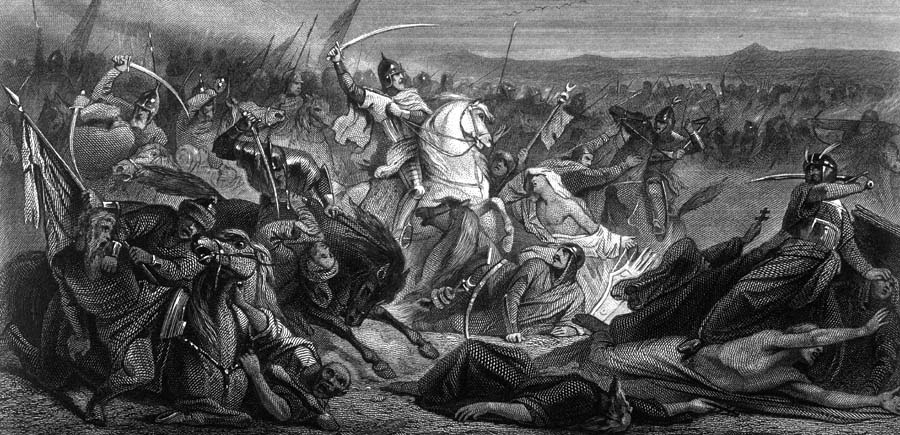
The Polovtsian collapse was as complete as it was sudden. Believing it was on the verge of easy victory, the Polovtsian cavalry was suddenly confronted with ordered ranks of Mongol cavalry. Thousands of Polovtsians fled in panic, unheeding any and all attempts by their leaders to rally them. Although some escaped to the north and south, the main body of Polovtsians fled northwest the way they had come, right into the path of the advancing Russian forces attempting to catch up to them.
The leading Russian column consisted of 500 Volyn cavalry under Prince Daniel. The torrent of fleeing Polovtsian riders disordered and scattered them. The Polovtsians also disordered the men of Galich and Lutsk who did not have time to close up. The only troops that were not immediately disordered by the Polovtsian retreat were those from the Smolensk force. Given that they were farther back along the route of advance, the Smolensk cavalry had sufficient warning. Prince Vladimir of Smolensk ordered his horsemen to close ranks, and they formed a circle on a low hillock.
The Mongols smashed into the disordered horsemen under Prince Daniel. In turn, each Russian mounted detachment became isolated, desperately fighting to link up with the others. From the top of the small hillock, Prince Vladimir could see the unfolding disaster. His troops were an island in the sea of disordered Russians and Polovtsians. His trumpeters repeatedly sounded the rally for other groups of Russian cavalry that had become separated to join them. Realizing the futility of remaining in place, Prince Vladimir ordered an attack to link up with Mstislav of Galicia, so that the Russians could withdraw together. Seeing the banner of Mstislav of Galicia falling back, other Russian cavalry forces began retreating as well. Prince Daniel fought bravely and was wounded several times. Barely able to stay in his saddle, he was supported on each side by a bodyguard.
The main body of the Mongols swept around the Russian cavalry to reach the infantry of Galicia-Volhynia and Smolensk. These lightly armored foot soldiers, to their credit, were falling back in some semblance of order. The Mongol horse archers rode back and forth along the Russian ranks, firing into them at point-blank range, inflicting heavy casualties in the process. The Russian infantry eventually broke under the merciless barrage of arrows. The panicked foot soldiers streamed in flight toward the Kalka River.
Back at the Kalka River crossing, the first fleeing Polovtsians arrived at 11 am with news of the unfolding disaster. But Mstislav Romanovich refused to budge from his position on top of his rocky knoll. Not wishing to wait any longer, Prince Mstislav of Chernigov took his forces forward. About an hour later, he led his troops across the river. They deployed to march in battle formation with the infantry in the center and cavalry on the flanks.
Before the men of Chernigov marched forward, retreating groups of infantry from Galicia-Volhynia and Smolensk arrived. The men of Chernigov closed ranks to keep the panicked men from disordering them. Desperate foot soldiers clawed at the Chernigov shield wall in blind panic in an attempt to squeeze their way through to perceived safety. The Mongol heavy cavalry rode behind and among the retreating infantry, spearing panic-stricken men with impunity. Before the Chernigov infantry had the chance to close the gaps caused by the fleeing men, the Mongols succeeded in cracking their line.
Prince Mstislav of Chernigov counterattacked with his cavalry, allowing his infantry to reform and briefly halted the Mongols. The fighting grew both in its intensity and brutality. Mstislav of Chernigov’s two nephews were cut down. The Mongols also felled Prince Mstislav of Chernigov. His son, Vsevolod, was able to briefly maintain control. But when the Mongols slayed him as well, the men of Chernigov began a disordered retreat back across the river. Just in the nick of time, though, the remaining cavalry of Galicia-Volhynia, Lutsk, and Smolensk attacked the Mongols from behind. As the Mongols fell back to reform, a lull settled over the battlefield.
On the east bank of the Kalka River, Mstislav of Galicia rallied the surviving cavalry of Galicia-Volhynia, Lutsk, and Smolensk. A humiliated Mstislav of Galicia appealed to Mstislav Romanovich for help. Even seeing his rival humbled, the Grand Prince of Kiev still refused to budge from his fortified camp. His 2,000 men were among the best armed and experienced troops in the entire Russian army. With a heavy heart, Mstislav of Galicia ordered a general retreat sounded. His surviving troops withdrew to the west bank of the Kalka River where they began the long trek back to the Dnieper River and the awaiting longships.
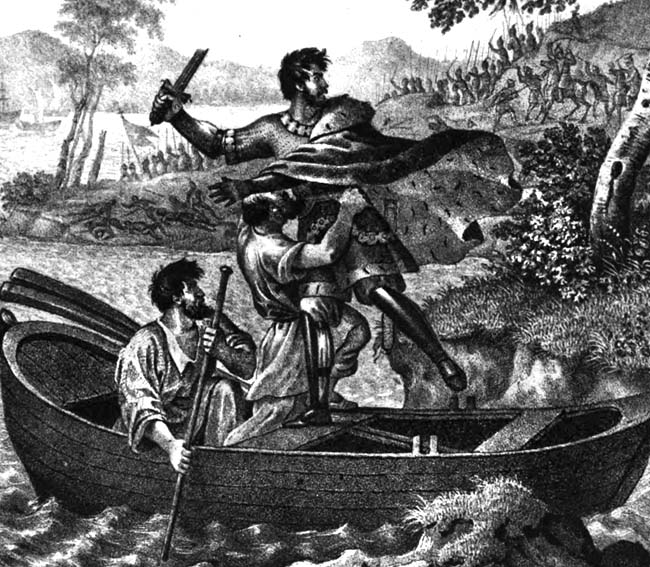
The Russian infantry was in bad shape. Many had discarded their arms and armor in their flight. They staggered along the track, suffering from heat, thirst, and wounds. On the evening of May 31, the Mongols caught up to the retreating Russians. In order to buy time for his infantry to reform, Mstislav of Galicia led his cavalry in a desperate counterattack. His two nephews, Izyaslav and Svaytoslav, both died in the desperate fighting. The Mongol archers once again took a heavy toll of the beleaguered Russian infantry. Darkness brought a welcome end to fighting for the Russians.
Weary Russian princes gathered to discuss their next course of action. It was painfully obvious that the tattered remnant of the Russian infantry was in no condition to escape the fast-moving Mongol cavalry nor could it offer an effective defense. With that in mind, the surviving Russian cavalry could either remain with the infantry where they would in all likelihood perish alongside them, or they could abandon the infantry to their fate in the hope of making their own escape. With heavy hearts, the majority of the princes made the brutal decision to abandon the infantry. The only one who did not was young Prince Dmitriy Mstislavovich from Chernigov. He and his small retinue of men-at-arms valiantly decided to fight to the death.
Many of the infantrymen managed to slip away during the night. The desertions continued in the early morning hours of June 1 as Dmitriy Mstislavovich formed up the remaining men for battle. The Mongols appeared shortly after dawn. The Russians held out for almost an hour. When Dmitriy Mstislavovich fell, all resistance collapsed. After several hours spent riding down and slaughtering the fleeing Russians, the bulk of the Mongols withdrew. The infantry of Galicia-Volhynia, Chernigov, Lutsk, and Smolensk were virtually annihilated by that point.
On the evening of June 1 approximately 1,200 surviving Russian cavalrymen halted to rest on their way back to the Dnieper River. When the time came to leave again in the morning, Prince Yuri Glebovich of Nesvizh halted to rest his troops on the belief that they were sufficiently safe from the pursuit. The other princes continued their withdrawal without him, but the Mongols soon appeared. They proceeded to slaughter nearly all of Prince Yuri’s 100 remaining men, as well as the prince himself. The Mongols then withdrew to the Kalka River.
Approximately 1,000 Russian cavalry reached the Dnieper River and the safety of long ships. After ferrying his men across the river, Prince Mstislav of Galicia ordered the rest of the boats burned so that the Mongols, if still in pursuit, could not use them to get across. Once on the west bank of the river, Mstislav of Galicia and Mstislav of Lutsk, accompanied by a seriously wounded Daniel Romanovich, headed to Galich. Prince Vladimir of Smolensk led his troops back to Kiev.
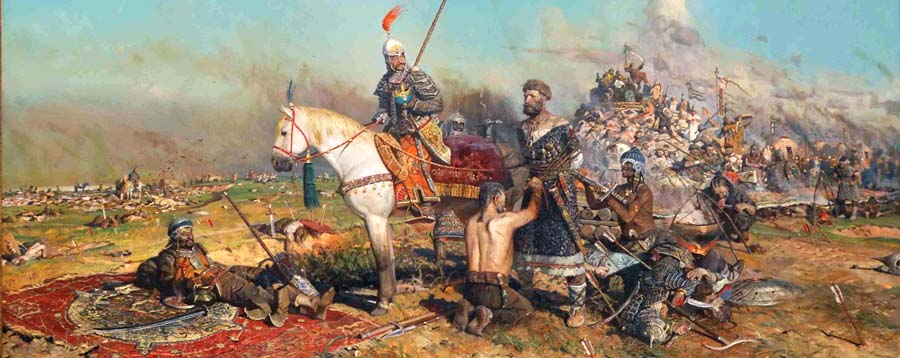
Having crossed the Kalka River, Subutai and Jebe divided their army into two sections. One section encircled the Kievans’ fortified camp, while the other section chased the retreating Russian forces. The Russians were in a good defensive position, protected by circled wagons and sharpened stakes. The slopes of the hill were sufficiently steep to prevent a Mongol mounted attack; for that reason, the Mongol warriors launched a dismounted attack. The Russian warriors, who were sheltered behind and on top of their wagons, repulsed multiple assaults. In vain, the Mongols tried to hook and pull apart the wagons, while the Russian warriors stabbed and slashed at them from above. Crouched behind their shields and wagons, the Russians succeeded in blunting the Mongol archery.
After three days of attacks, the Mongol commanders sent Mstislav Romanovich an offer of safe passage if the Russians left behind their weapons, banners, and possessions. Mstislav Romanovich refused, for surrendering their weapons and banners would result in a major blow to his prestige. But the Russian position had one major weakness, which was that it was a half mile from the river. By the end of the third day of siege, the Kievans were nearly out of water.
Mstislav Romanovich held a war council to determine his next steps. Most of his commanders argued for retaining their weapons and fighting their way out of the trap. While the Grand Prince of Kiev was mulling over his options, a Mongol envoy arrived. The envoy’s name was Ploskinya, and he was the leader of the Brodniki band that served as scouts. Brodniki were escaped serfs and slaves from Russian lands who settled on the far outskirts of the steppes and frequently intermarried with local nomads. Ploskinya had a Russian father and a Polovtsian mother. He swore on a cross that the Mongols were sincere in their promises of safe passage. Taking Ploskinya at his word, Mstislav Romanovich ordered his men to disarm.
As the Russians marched out of their camp, they laid down their arms and armor and set off northwest after refilling their canteens from the Kalka River. Mstislav Romanovich and his two sons-in-law, Prince Aleksander Glebovich of Dubrovitsy and Prince Andrei Vladimirovich, became separated from their men and were captured by the Mongols. Alarmed at their circumstances, they asked what their fate would be. They were told that they would be held for ransom, but not harmed. Once the column of disarmed Kiev warriors was out of sight of its abandoned camp, the Mongols overtook the column and slaughtered most of the unarmed troops. Those who were mounted, which numbered about 200 warriors, managed to escape.
The Mongols then turned their attention to the captured princes. They bound Mstislav Romanovich and his two sons-in-law by hand and foot. These high-ranking Russians were informed that the punishment for killing Mongol ambassadors was death; however, Mongol custom allowed the shedding of princely blood only in battle. The three Russian princes were then placed on the ground and boards were laid on top of them. Subutai, Jebe, and several senior Mongol commanders climbed the wobbly platform for a victory feast. As the Mongols leaders laughed and celebrated their victory, the three captive Russian princes were crushed to death.
The disaster that befell the combined Russian forces at the Kalka River was devastating. Less than one-tenth of the army returned home. A dozen Russian princes died. As soon as Prince Vladimir of Smolensk reached Kiev, he declared himself regent until the return of Mstislav Romanovich. The fate of the Kiev contingent was yet unknown, but Prince Vladimir was gambling that Mstislav Romanovich would not return and began maneuvering accordingly.
As soon as the three sons of Mstislav Romanovich returned to Kiev from their own campaign against Grodno and Polotsk, they immediately began plotting to remove Prince Vladimir from Kiev. Yet Vladimir, who was supported by Mstislav of Galicia and Daniel Romanovich, ultimately gained the upper hand. In the wake of his triumph, he exiled them from Kiev.
After Mstislav of Galicia died of natural causes in 1228, Daniel Romanovich became a major force in southwestern Russia. He succeeded in navigating the dangerous political shoals that confronted him. He had to muster all of his political skills to deftly handle the Mongols, Hungarians, Poles, and Lithuanians. By the time of his death in 1264, Daniel had greatly enhanced the prestige and expanded the territory of Galicia-Volhynia; for his achievements, he is revered in Ukraine as one of the region’s greatest leaders.
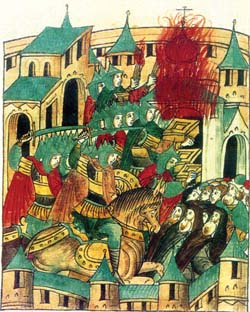
Khan Kotyan eventually fled to Hungary with tens of thousands of his followers after suffering another crushing defeat at the hands of Mongols in 1237. When King of Hungary Bela IV offered the Polovtsians asylum in Hungary, Kotyan converted to Catholicism and wed another one of his daughters to Bela’s son, the future King Stephen V. But the Hungarian nobles never completely trusted Kotyan, who was christened Jonas on his conversion. The former Polovtsian khan was assassinated in 1241 on the eve of the Mongol invasion of Hungary.
After remaining on the steppe lands south of Russia until the end of 1223, the armies of Subutai and Jebe returned to Mongolia. Their reconnaissance campaign, which had lasted three years and covered more than 5,500 miles, was a resounding success. They not only returned with a tremendous amount of plunder, but also had gleaned invaluable insight into the Russian political situation and military strength. Furthermore, they had seen with their own eyes the characteristics of the terrain.
Subutai and Genghis Khan’s grandson Batu returned to Russia in 1237. Over the course of the next two years he subjugated a number of Russian principalities, including Kiev, Chernigov, and Galicia-Volhynia. Thus began a 240-year period known as the Mongol Yoke in which many of the Russian princes became vassals of the Mongols. Russian vassalage to the Mongols officially ended in 1480 with the defeat of the Golden Horde at the Great Stand on the Ugra River.
